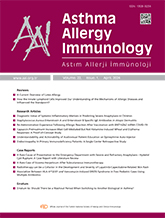


Skin rash induced by concurrent radiotherapy during lapatinib-capecitabine (LC) treatment has been rarely reported. We aim to draw attention to the potential of radiotherapy to act as a cofactor in the development of LC-related skin rash.
Herein, we report a case with a drug-related skin rash triggered by radiotherapy during LC treatment.
A 31-year-old woman with inflammatory metastatic breast cancer presented with a skin rash during LC treatment combined with radiotherapy. She was started on LC treatment, and palliative whole cranial radiotherapy was applied 3 days later. Three days after the radiotherapy, acneiform lesions started from the scalp and a maculopapular rash developed on the trunk and extremities. LC treatment was interrupted and skin lesions regressed rapidly with topical dermatological care, oral H1-antihistamine, and short-term oral steroid treatment. Although LC treatment was restarted alone in the follow-up, no recurrence was observed.
Radiotherapy may be a cofactor in the development and severity of skin toxicity during LC treatment. There is a need to elucidate whether the immunological mechanisms of skin eruptions occurring during concomitant chemoradiotherapy are due to the radiosensitizing effects of biological agents or exacerbation by radiotherapy.